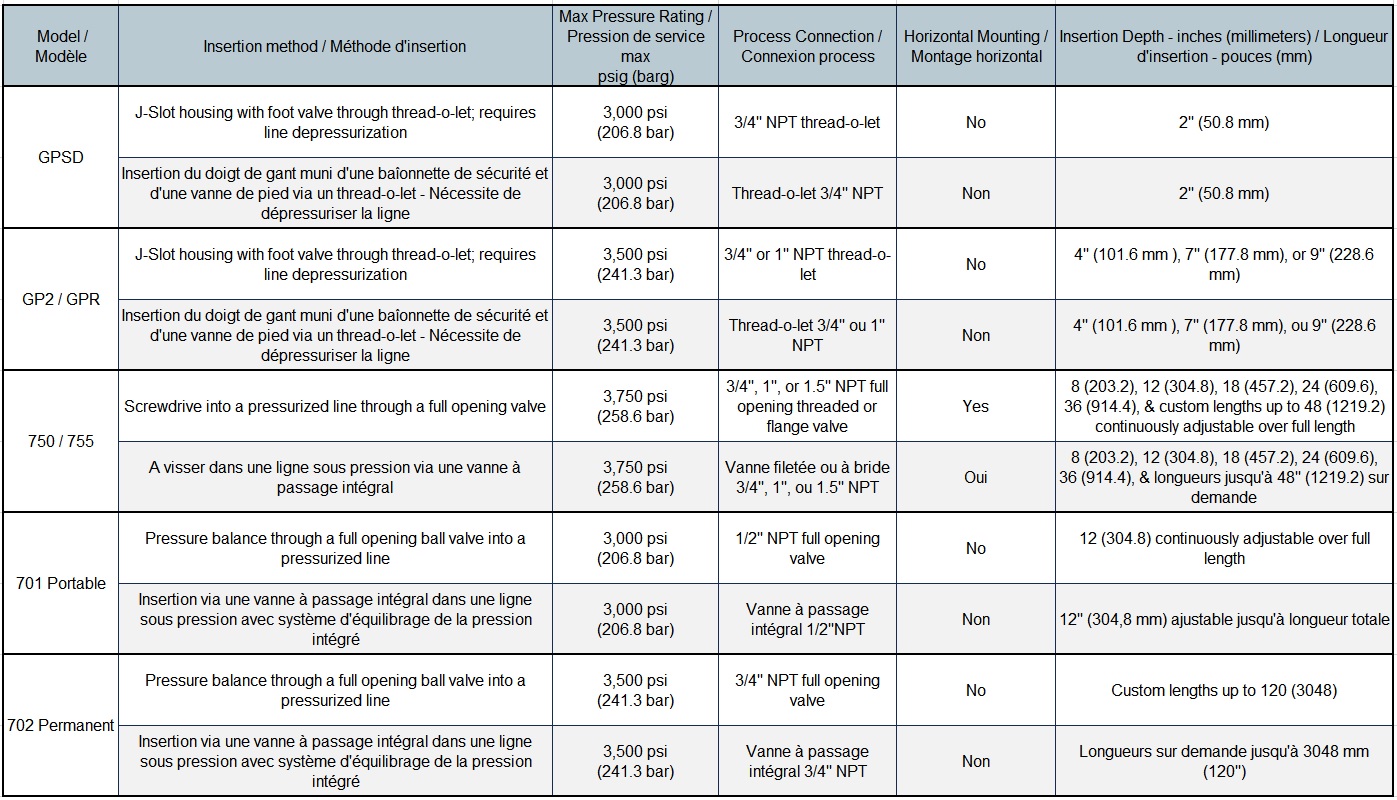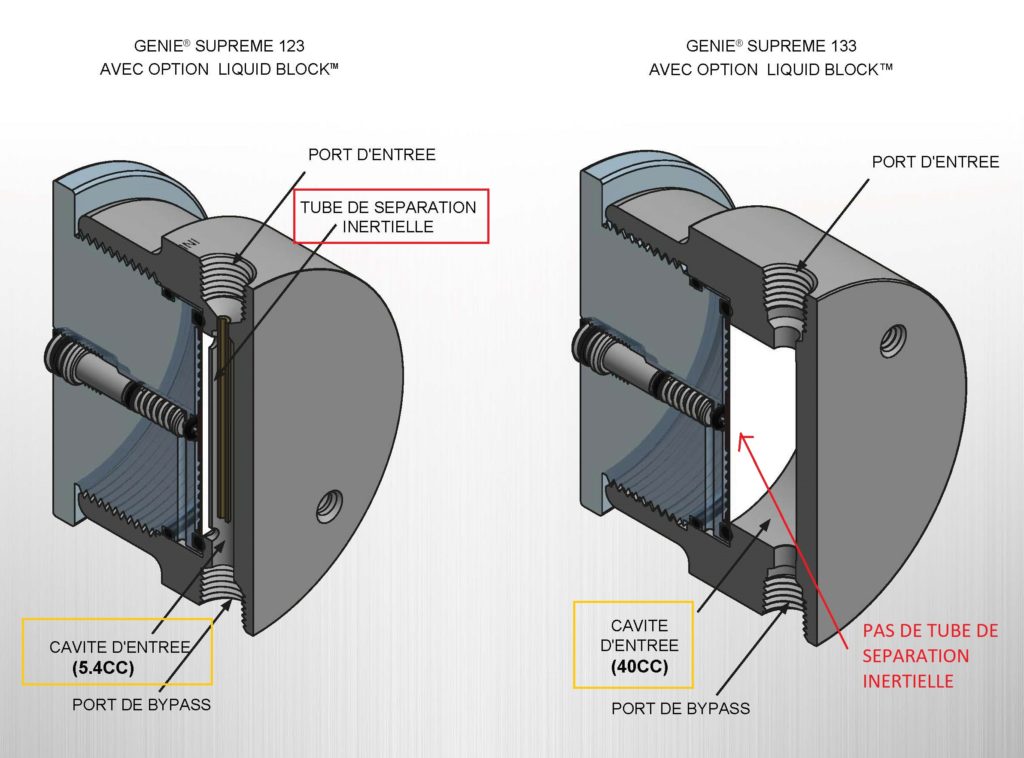FAQ
SAMPLING SYSTEMS FOR NATURAL GAS AND LIQUIDS ANALYSIS
Sampling probes
GENIE's range of sampling probes includes a dozen models.
Each model has different characteristics: with or without pressure regulation, process connection, operating pressure, insertion length, insertion method...
To quickly find the right probe for your application, consult the comparison chart below:

Download the comparison table for sampling probes:
Separators and Filters
The 2 GENIE 123 and GENIE 133 separators are the largest in the A+ Corporation liquid/gas separator range. Although they can handle identical flow rates and temperatures, their design and use are different.

The GENIE 133 separator has a larger internal cavity than the GENIE 123 separator, and can withstand higher pressures.
The GENIE 133 separator is ideal for continuous sampling of a gaseous source where large quantities of liquids are present, e.g. for the collection and processing of natural gas, for CEMS and certain refinery and petrochemical gases.
It can be mounted on a sampling probe (GENIE GPHV or 760) when the probe, fitted with a membrane at its end, is invaded by liquids. It can also be mounted before an analyzer or pump to protect them.
Finally, it is recommended for sample pre-conditioning in applications where there is no bypass and liquids must be discharged from the separator by gravity.
Miscellaneous information
The composition of the membranes is patented and cannot be disclosed. However, we can confirm that Genie® membranes do not alter the composition of the gas sampled.
Tests have been carried out by A+ Corporation to determine whether the membrane with which Genie® separators are equipped alters the composition of the gas sample;
After several series of tests, chromatographic analysis showed that the composition of the sample was virtually identical, whether it passed through a Genie® membrane or not. The gas sample is therefore unaltered as it passes through the Genie® membrane.
You can read the report: Genie Membrane Testing
What data do I need to choose a probe?

GENIEFILTERS sampling probes offer you a wide choice of models and options to provide you with the solution adapted to your configuration: separation at the tip of the probe or not, length, connection, with or without gas pressure reduction, fixed or transportable, installable on depressurized or pressurized lines...
For us to be able to help you determine which sampling rod is best suited to your application, a certain amount of information is required:
- What are the process conditions? Fluid composition, speed, temperature and pressure?
- What are the probe selection criteria? Fixed or transportable? Can it be installed on a pressurized line or not?
- Do I need a pressure regulator? What is the output range?
- How will the valve be installed? On a valve? A flange? NPT connection?
- What is the diameter of the pipe?
The application sheet below summarizes all the necessary information. You can fill it in and send it back to us, so that we can advise you on the choice of a sampling rod.

